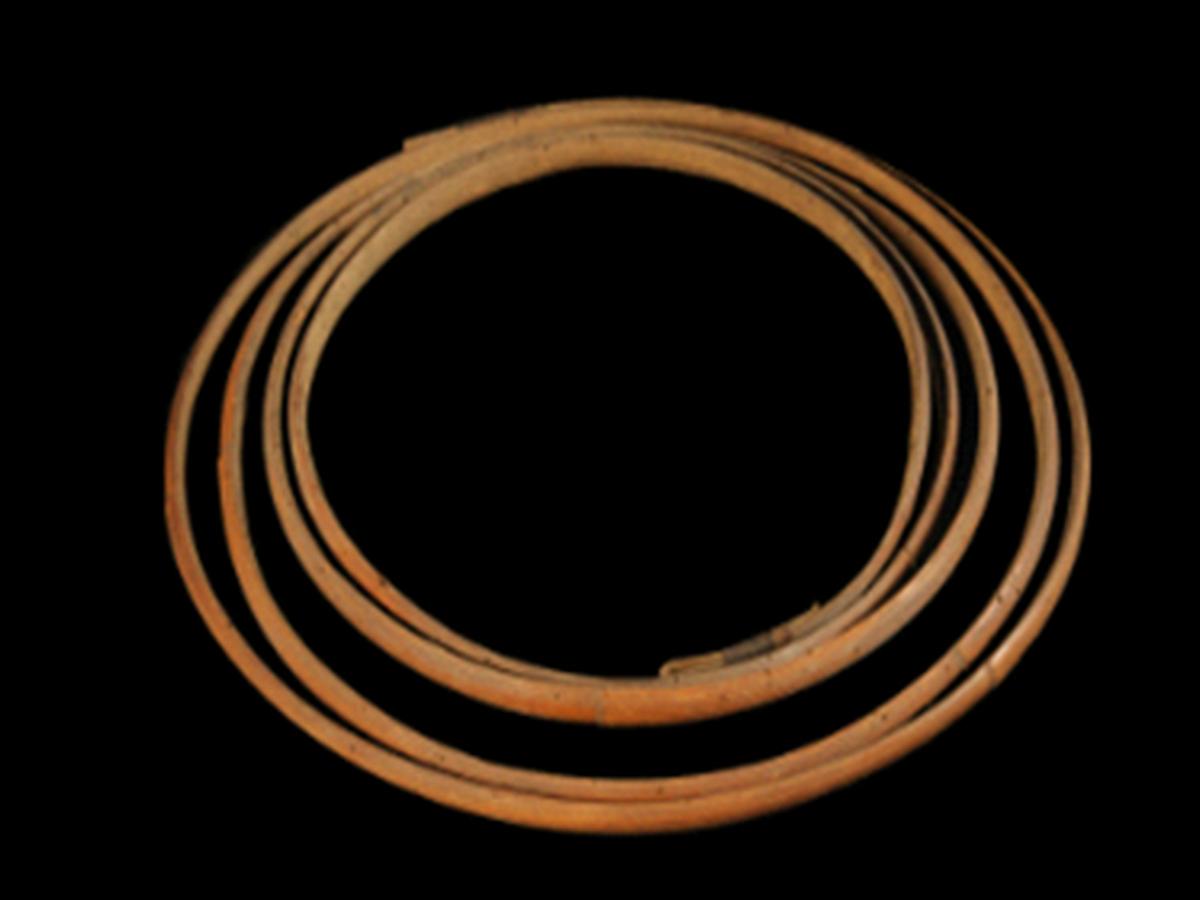State
Tribe Name
Art Type
short description
This original, sleeveless overcoat embodies the typical cultural identity of the Mikir tribe, an indigenous community found largely in Karbi Anglong district, Assam, India. The Mikir or Karbi have their own language, customs, and types of attires as they are culturally and politically called. They are fond of their textiles, describing their lifestyle and aesthetic sense that developed over centuries.The coat is striped with maroon-and-off white cotton and was dyed with the naturally used colors in Mikir textile dyeing. It has long cotton fringes in colors matching the stripes, which form an elegant as well as rhythmic movement while wearing it. The embroidered designs just above neck side of both sides show needle work prowess of one's own community.
Thumbnail

Filter Postion
Left
Filter Background
Off
Theme
Filter Header Image

content
Image

description
This original, sleeveless overcoat embodies the typical cultural identity of the Mikir tribe, an indigenous community found largely in Karbi Anglong district, Assam, India. The Mikir or Karbi have their own language, customs, and types of attires as they are culturally and politically called. They are fond of their textiles, describing their lifestyle and aesthetic sense that developed over centuries.The coat is striped with maroon-and-off white cotton and was dyed with the naturally used colors in Mikir textile dyeing. It has long cotton fringes in colors matching the stripes, which form an elegant as well as rhythmic movement while wearing it. The embroidered designs just above neck side of both sides show needle work prowess of one's own community.
Though it is still stitched joining two pieces of hand-weaved fabrics, the neck and armholes are left completely opened for functional purposes as well as decorative ones during ceremonials or festive occasions. They exclusively wear these kinds of coats for men during traditional festivals, through rituals, or even dances. A coat is not a mere article of clothing; rather, it is a social identifier and an expression of pride for tribal heritage.Minimalist and the just, the design speaks of the Mikir as people close to nature, society, and craftsmanship. Such garments record the continuance of indigenous technique from generation to generation.
Though it is still stitched joining two pieces of hand-weaved fabrics, the neck and armholes are left completely opened for functional purposes as well as decorative ones during ceremonials or festive occasions. They exclusively wear these kinds of coats for men during traditional festivals, through rituals, or even dances. A coat is not a mere article of clothing; rather, it is a social identifier and an expression of pride for tribal heritage.Minimalist and the just, the design speaks of the Mikir as people close to nature, society, and craftsmanship. Such garments record the continuance of indigenous technique from generation to generation.
Image Mode
landscape
promoted
On
Verified
Off
